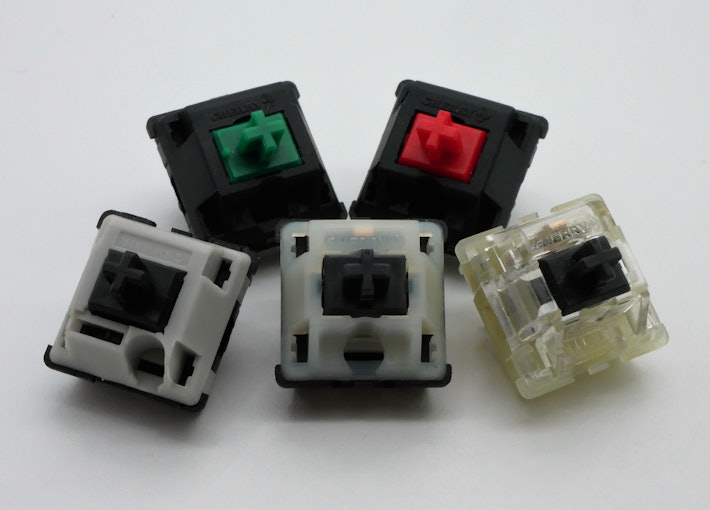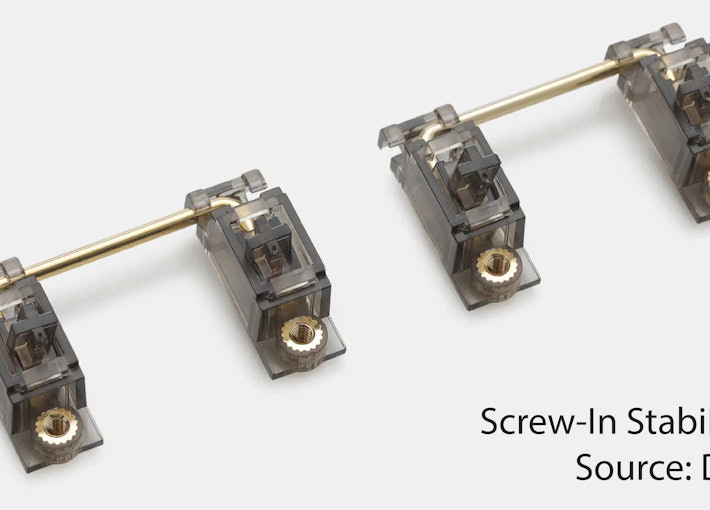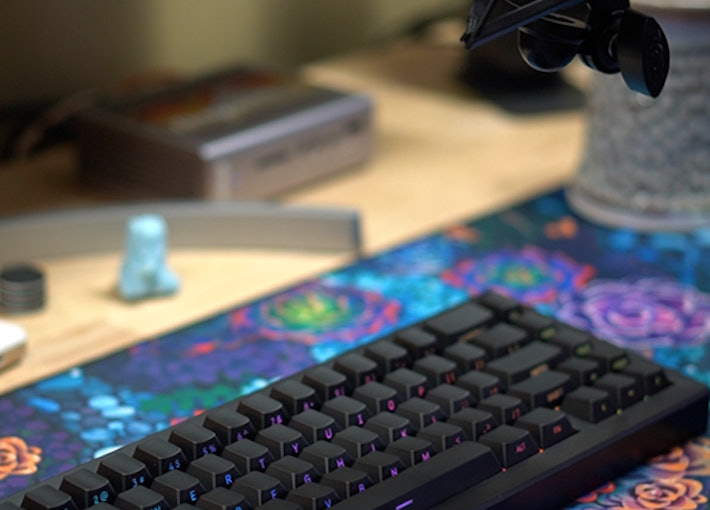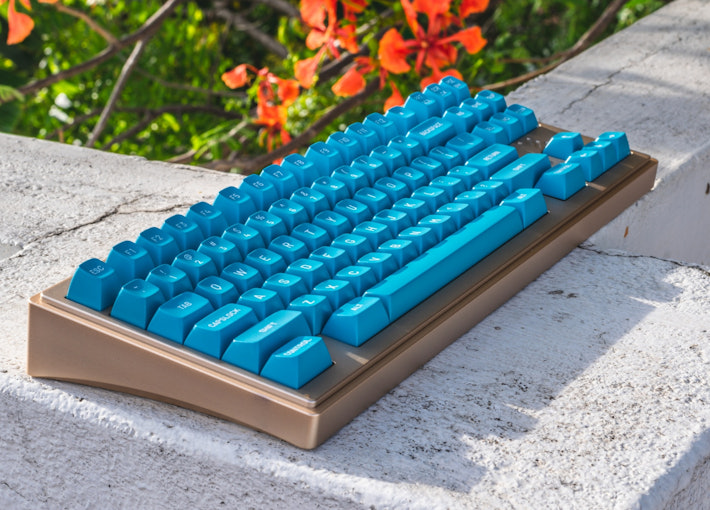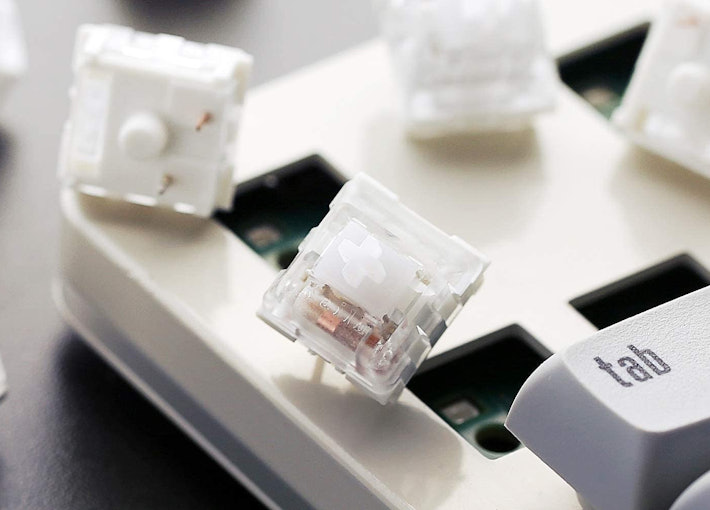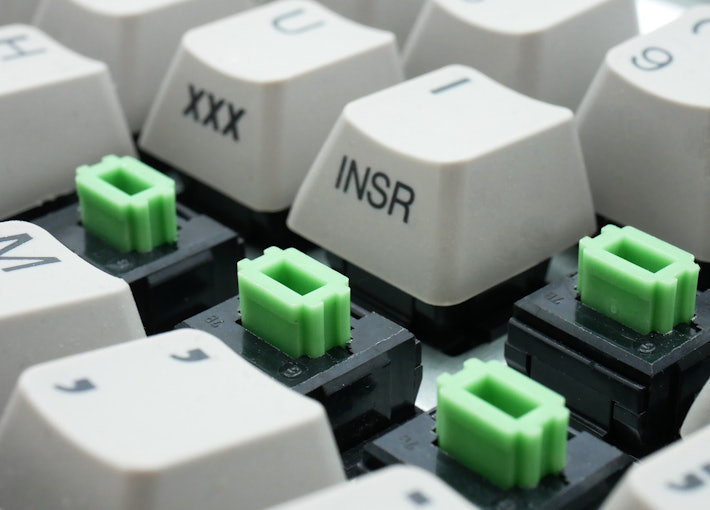Click to view our Accessibility Statement or contact us with accessibility-related questions





















All Communities
Posted in Mechanical Keyboards
ThereminGoatMK
429
Feb 8, 2023
The Who's Who of Switch Manufacturers
Let’s face it – everything in the world today revolves around brand names. The clothes have to be Supreme or Gucci, the cars have to be Lamborghinis or Porsches, and the cereal better have Toucan Sam on it, or I will go hungry all day. While a lot of these brands have become ingrained into every facet of our lives thanks to social media, television, etc., many people don’t realize just how foreign the appeal of some of these brands would be if we weren’t overly invested in fashion, cars, or breakfast cereals. In much the same way, when people begin stepping into the mechanical keyboard scene they lose complete bearing on what brands represent what. The matter is only further compounded with switches, which have nearly exploded in popularity and number of releases in recent years. So, while I may not be able to give you all of the ins and outs of every single manufacturer out there, here’s an arbitrary amount of the most common brand names in switches that you should be aware of...
Posted in Mechanical Keyboards
ThereminGoatMK
429
Jul 23, 2024
I Think My Switch Is Stuck! - The Tale of Cherry MX Locks
Over the years of collecting mechanical keyboard switches, I’ve been lucky enough to have encountered dozens upon dozens of rare and unique ones that have stuck in my mind to this day. Prototypes, factory errors, and even a few switches so rare that there is literally zero documentation about them anywhere in the world all fill that personal list from top to bottom. However, I realize that talking about switches so far outside of most people’s reaches, and even sometimes my own grasp, doesn’t make for the most exciting of articles about switches. To this newest generation of keyboard enthusiasts, though, there is one pretty rare MX-style switch which has made its way to the top of everyone’s “must try” lists – Cherry MX Locks. These often undiscussed and even more rarely seen switches are something that few people have seen and even fewer have had the chance to try at a meetup before. However, the list of people who really know how these unique Cherry switches work is even shorter...
Posted in Mechanical Keyboards

Drop+MechKeys
4399
Aug 24, 2018
How to Configure your Drop Keyboard!
Hey everybody! Thank you for purchasing your Drop Mechanical Keyboard. We hope you’re enjoying it so far. If you’ve landed here, you probably want to take full advantage of the keyboard’s features so you’ve come to the right place.
We’ll start with the basics, then we’ll move on to complete custom configuration.
THE BASICS
Default Hot Keys - All Drop V2 keyboards, SENSE75, and CSTM80
Hold FN + listed keys to activate
LED Keys
Fn + W: LED Brightness Increase
Fn + S: LED Brightness Decrease
Fn + E: LED Animation Speed Increase
Fn + D: LED Animation Speed Decrease
Fn + R: LED Hue Increase
Fn + F: LED Hue Decrease
Fn + T: LED Saturation Increase
Fn + G: LED Saturation Decrease
Fn + Q: LED Toggle (All, Keys, Edge, Off)
Fn + A: LED Next Pattern
Fn + Z: LED Mono Color Mode
Fn + X: LED Breathing Effect
Fn + C: LED Rainbow Mode
Fn + V: LED Rainbow Pinwheel Mode
Keyboard Option Keys
Fn + N: Toggle keyboard 6KRO/NKRO (Default state 6KRO)
Fn + LCtrl + O: Windows /...
Posted in Mechanical Keyboards
ThereminGoatMK
429
Nov 1, 2022
The Three Main Types of Switches
Among the seemingly countless number of switch options out there, you’ll be surprised to know that the vast majority of them fit cleanly into one of three different categories known as ‘linear’, ‘tactile’, or ‘clicky’. I promise that I am not deceiving you here. Even with all of the different variations in weightings, color schemes, and manufacturing brand names that you see among switch options out there, most of them are one of these three main types. (Hint: That’s why DROP breaks down their switch options into those three categories.)
As to what the distinguishing features of each of the three main types of switches are, simply know that these are used to differentiate the sound and/or feeling between each switch. Additionally, some of the variations that you’ll see within each of these three main types may further provide some context as to how these switches are different from normal linears, tactiles, or clickies. So, without much more delay, let’s go ahead and walk through...
Posted in Mechanical Keyboards

storyboardtech
417
Oct 5, 2023
In defense of MT3, the most misunderstood and possibly greatest keycap profile.
Offices are tense spaces, there’s no way around it. Whether they’re silent, museum-like tombs or raucous zoos filled with energy. In this place of distraction, and often discomfort, it’s important to have tools that make you more efficient, comfortable and focused. Personally, I am lucky to work in a happy, healthy work environment with amazing coworkers, but my office is filled with distraction and on my best days it’s a challenging ecosystem in which to create.
I’ll be honest, I’m no gamer, and it wasn’t the speedy, silent linear switches or 8000Hz polling rates of gaming boards that drew me to this hobby. It was the spirit of clickety-clackety typewriters of the past and a desire to craft my words on a surface that deserved them… one that amplified my ideas and provided a comfy ambience that encouraged creativity.
I don’t feel old, and certainly don’t act old, but I’ve been a designer for 25 of my 43 years and in that whole time I’ve hated the keyboards I’ve used. With the...
Posted in Mechanical Keyboards

dovenyi
61
Apr 30, 2024
What is SpaceFN and why you should give it a try
The SpaceFN concept - setting up your space key as a layer switch when held - is probably one of the most useful tweaks in the keyboard hobby. Let me explain how it works.
My SpaceFN article on kbd.news made some rounds recently - quite surprisingly given the age of this concept. This piece you're reading is a condensed version of the full post. If you're left with unanswered questions, you'll most likely find the info you're looking for in the original write-up.
On my imaginary top list of the most useful keyboard features, tweaks and hacks, SpaceFN would deserve a podium finish for sure. But what makes it so special?
In short: SpaceFN is easy to implement, easy to learn, costs nothing, can be used with any keyboard, and can improve your productivity instantly.
I will list its benefits below, but can state right at this point that the SpaceFN concept, setting up your space key as a layer switch when held, is clearly one of the most useful tweaks in the keyboard hobby....
Posted in Mechanical Keyboards

dvorcol
5393
Apr 23, 2024
Support for Alternative Layouts
This is a summary of how alternative layouts have been supported by kits such as Colevrak and Homing. It is not a discussion of alt layout performance and development, but if that interests you I highly recommend starting with Pascal Getreuer’s A guide to alt keyboard layouts (why, how, which one?). It’s a concise and comprehensive overview with links to some great sites that go deeper. He also has a separate Links about keyboards page. The Keyboard layouts doc he recommends explains layout goals and metrics in detail, summarizing the alt layouts discussed here as well as more than one hundred others.
Sculpted-profile
The majority of custom keycap sets are sculpted-profile (Cherry, SA, MT3, KAT, etc. - more on profiles generally here) so let’s start there. Because each row has a unique keycap shape, alt layouts require a unique keycap for each legend that moves off its QWERTY row.
At first there were two
The Dvorak layout was patented in 1936 by August Dvorak & William L....
Posted in Mechanical Keyboards

HoffmanMyster
3110
Jun 21, 2022
How to use your ENTR Keyboard
Hey everybody!
Thank you for purchasing your Drop ENTR Mechanical Keyboard. If you’ve landed here, you probably want to take full advantage of the keyboard’s features, so you’ve come to the right place.
As the ENTR Mechanical Keyboard is an entry-level keyboard, it does not feature the same degree of customization as the ALT, CTRL, or SHIFT keyboards - therefore we will only cover the "basics" here.
THE BASICS - Default Hot Keys
LED Control (ENTR LEDs are white-only)
Fn + Up Arrow: Increase LED Brightness
Fn + Down Arrow: Decrease LED Brightness
Note that while the keyboard should work out of the box with macOS, Windows, and Linux-based operating systems, Fn hotkeys may work with Windows operating system only.
System Control
Fn + F4: Display Options
Fn + F8: Task View
Fn + F9: Launch This PC Folder
Fn + F10: Launch Calculator
Fn + F11: Launch Outlook
Fn + F12: Display Desktop
Fn + Windows: Windows Key Lock
Media Keys
Fn + F1: Mute
Fn + F2: Volume Down
Fn + F3: Volume...
Posted in Mechanical Keyboards
ThereminGoatMK
429
Apr 17, 2024
Do I Need to Lube My Keyboard Switches?
Figure 1: Sometime around here is a good time to ask that question...
If you’re new to the mechanical keyboard hobby, I have no doubt that planning your first keyboard build is a bit of a daunting task. To be entirely honest with you, it’s only a tiny bit less daunting for your second or even third keyboard builds should you stay around a little while longer. You’ve got the keyboard itself to worry about, stabilizers, keycaps, and even switches on top of all of the intangible marks you want your dream keyboard to hit. Switches are especially daunting right out of the gate as there’s just so many options out there to pick from – each with their own unique specifications, manufacturers, and more. Yet, in spite of all of these differences between switches, time and time again I find people always asking about lubing switches as one of their chief concerns when it comes to picking some up. With countless numbers of content creators talking about lubing switches, its no...
Posted in Mechanical Keyboards

storyboardtech
417
Feb 21, 2024
SA in 2024: Where does the high-profile king stand in the modern keyboard hobby?
In early 2021, I only had eyes for SA Godspeed.
Raised in Florida across the bay from Cape Canaveral, I grew up watching space shuttle launches, and my dad’s life-long obsession with NASA, space and sci-fi quickly spread to me. At 27, I was introduced to Neil Armstrong, a personal hero, and was able to tell him the impact he had on me and my family. So on that fateful spring day when I walked into my IT department and told my coworkers that I was thinking of getting into mechanical keyboards, the first set I wanted to own was Godspeed. It took awhile, and I mean awhile for me to accumulate all the different versions of that set. It has three alphas (Solar, Lunar and Supernova), a few full alternates (Mito & Genespeed) and several alternate modifier sets including the transcendent Ares colorway. But several hundred dollars, and many months later, I had constructed a few keyboards all equipped with different versions of SA Godspeed. I made an Earth keyboard, a Mars, an Asteroid, a...
Posted in Mechanical Keyboards
cobertt
22
Mar 5, 2024
Stabilizer Shake Down - A breakdown of modern MX-style stabilizers
One of the best parts of custom keyboards is the sound they make. It’s clean, crisp, and free from any chatter or rattles. On a well-built custom keyboard, each keystroke is solid and definitive. On the smaller keys on your keyboard, keys 1.75 units or less, you can attribute that feeling to the switches themselves. However, on larger keys, keys that are 2 units and larger, stabilizers can make or break that feeling. Today, there are a plethora of different stabilizer options available for purchase. It can be confusing trying to navigate the different brands and configurations of stabilizers. Hopefully, after reading this, you’ll have the confidence to purchase the stabilizer that fits both your budget and your needs.
Before laying out the stabilizer options, it is important to understand their function within a keyboard. Stabilizers serve two main purposes. The first is to ensure that when pressing a larger key (2 units or larger) there is consistency in the keycap press. This...
Posted in Mechanical Keyboards
ThereminGoatMK
429
Mar 27, 2024
Mechanical Keyboard Sound Isn't That Simple
Figure 1: I couldn't think of a more literal way to represent this article if I tried...
Looking back just a few years ago, there’s no doubt that the huge influx of people that joined the hobby at the peak of the COVID pandemic were drawn to keyboards by way of YouTube, TikTok, and other audio-visual content platforms. Even as the output from these content creators has waned in recent months, their collective impact and legacy on the keyboard hobby is rather firmly etched in the history books. As a result of all of their sound tests, build logs, and opinion videos, the message is clear to any new person joining the hobby: mechanical keyboards are all about the sound. Thock this, clack that. Whether it’s keyboards, keycaps, or even singular switches, seemingly everyone new to the hobby meticulously pores over each component of their keyboard not in an attempt to figure out how it will feel in hand, but how it will sound as they’re furiously grinding their way out from...
Posted in Mechanical Keyboards

HoffmanMyster
3110
Jan 5, 2023
Keycap Profiles
When considering which aftermarket keycap set to get, there can be many different factors to consider. We’ve already discussed the different materials that keycaps can be made from, and of course there is the obvious colorway consideration, but what about the shape of the individual keycaps themselves?
In the early days of the enthusiast keyboard hobby, there were extremely limited options available for aftermarket keycap sets. Unicomp was making replacement keycap sets for buckling spring keyboards and Signature Plastics was making keycap sets compatible with MX switches (GMK had not yet become an option to the enthusiast market - that would come a couple years later).
Now, though? You’d be easily forgiven for being overwhelmed by the number of options available on the market at this point.
Let’s walk through the characteristics that define the various profiles, and cover some of the major profiles you’ll come across.
▪️ Keycap Shape (Spherical, Cylindrical, Flat)
▪️ Sculpted...
Posted in Mechanical Keyboards

HoffmanMyster
3110
Apr 9, 2024
DCX vs DCD vs DCL - Drop’s Keycap Profiles Explained
We’ve covered the basics of keycap profiles before—spherical/cylindrical, sculpted/uniform, etc. One thing that has come up more and more over the years as we’ve expanded our portfolio of offerings here at Drop is the distinction between some of our similar profiles. Specifically, what is the actual difference between DCX, DCD, and DCL?
Cylindrical Profiles
To recap the previous article on the topic, one of the most basic ways to separate various keycap profiles is by shape (cylindrical, spherical, or flat). DCX, DCD, and DCL are all cylindrical profiles.
The most famous cylindrical profile is Cherry profile, as defined by the original manufacturer of the keycaps—Cherry. GMK now owns those tools, and as such, only they can technically claim to produce “Cherry” profile keycaps. Similar keycap profiles are often called Cherry profile colloquially, but are in actuality slightly different. For the sake of not splitting hairs, all of the cylindrical profiles discussed here are...
Posted in Mechanical Keyboards

Drop+MechKeys
4399
Oct 19, 2018
How to Configure your ALT Keyboard
Hey everybody!
Thank you for purchasing your Drop ALT Mechanical Keyboard. If you’ve landed here, you probably want to take full advantage of the keyboard’s features, so you’ve come to the right place.
We’ll start with the basics, then we’ll move on to complete custom configuration.
THE BASICS
Default Hot Keys
Hold FN + listed keys to activate
LED Keys
Fn + A: LED Pattern - Select previous
Fn + D: LED Pattern - Select next
Fn + Q: LED Pattern - Decrease scrolling speed (for animating patterns)
Fn + E: LED Pattern - Increase scrolling speed (for animating patterns)
Fn + Caps Lock: LED Pattern - Change scrolling direction (left to right, right to left, bottom to top, top to bottom, radial center to edge, radial edge to center)
Fn + W: LED - Increase brightness
Fn + S: LED - Decrease brightness
Fn + Tab: LED - Toggle breathing effect
Fn + X: LED - Toggle all LEDs off/on
Fn + Z: LED - Toggle mode (keys + edge, keys only, edge only, all off)
Fn + R: LED - Increase...
Posted in Mechanical Keyboards

The_Manic_Geek
417
Jan 18, 2023
Best Practices When Building A Keyboard
I don’t like the phrase “it should go without saying”; if that were the case, there would be so many things that never got mentioned, and a lot of things we’d get wrong because of it. This is also true when building your custom mechanical keyboard: there’s a multitude of best practices out there that can, and will, help guide you towards a cleanly built, good-sounding board and an overall positive experience, provided someone *tells* you what those are. Here are some that “should go without saying”, but will be said anyway for those who are new to the hobby, or just getting back in after some time away!
We’ll be focusing on hotswap mechanical keyboards, as those are by and large the most popular kind of PCB for newcomers and veterans alike, though many of our practices will still apply to soldered builds as well. As always, if there’s anything you feel we missed and would like to add, or need further clarification on, feel free to leave a comment below!
Check All Parts Before...
Posted in Mechanical Keyboards
cobertt
22
Apr 2, 2024
3 or 5? How many pins does your switch really need?
One of the oldest questions, albeit one you don’t see very often anymore, is about 3-pin and 5-pin MX switches. Early in the custom switch scene, budding enthusiasts would need to determine whether their keyboard needs 3-pin or 5-pin switches. Today, the question doesn’t appear as often as it used to, but it is still important to know the difference and when one is a better choice.
The difference between these two types of switches is in the name, the number of pins. As seen in the pictures below, 3-pin switches have two metal legs for the contact leaves and registering of switch presses as well as the stem pole. These switches were traditionally called plate mount switches, as they relied on the plate to align the switches on the PCB. 5-pin switches have the same contact pins and stem pole but are also accompanied by two additional alignment pins on the left and right of the stem pole. These were called PCB mount switches, as they could be used without plates as the PCBs would...
Posted in Mechanical Keyboards
ThereminGoatMK
429
Sep 27, 2023
We Know Nothing About Switch Materials
Figure 1: A fantastic Kailh switch photo from Blitzenx51!
There’s any number of different details people look into when they’re trying to pick out switches for their next keyboard build. However, arguably none of them are as vague and mysterious as the materials used to make housings and stems. Yes, even as manufacturers are iffy about their spring weights and newer brands are sketchy about who actually made their switches, differentiating POM from Nylon from Polycarbonate remains to this day the least understood parts of mechanical keyboard switches. For what it’s worth, I don’t have a fix for that either. As someone who has completed a master’s degree in chemical engineering focusing on polymer science, I understand full well that attempting to reverse engineer the formulas of even the most simple keyboard switch materials would take months on end and nearly free-range access to numerous analytical instruments that companies simply won’t hand over to you. However, that...
Posted in Mechanical Keyboards
ThereminGoatMK
429
Feb 28, 2024
The Vintage Switch Conundrum
Figure 1: What could be so confusing about some pretty NOS Alps SKCL Greens?
Having thoroughly beaten my opinions to death on well over a hundred different modern, MX-style switches over the past few years, one of the most common questions I get revolves around why I hardly use and/or review vintage, non-MX style switches at all. After all, the wide world of vintage mechanical keyboard switches is full of unique, odd mechanisms and “all modern switches are just recolors of each other.” While I take personal issue with that incredibly misguided second claim, I can totally understand how people can look at the wide swathes of variation in vintage switches and naturally think that that would be something I’d gravitate towards. And for what it’s worth, vintage switches are both incredibly interesting and something that I have quite a lot of hiding away in boxes. Some of my favorite brands and styles include RAFI Hall Effect switches, Hi-Tek 725s of all forms, SMK Inverse...
Posted in Mechanical Keyboards

storyboardtech
417
Mar 21, 2024
Keyboards at work: A rationale for returning mechanical keyboards to the office environment.
As I walk down the hall to my office each morning, I hear the discordant clattering of keys coming from my coworker’s office. In the hall… several doors down… I hear them. Like the loose teeth in my grandma’s poodle, barely hanging on, they rattle and heave. If anyone’s ever told you that mechanical keyboards are too loud, it’s simply because that person has become completely desensitized to the garbage-bomb that is the standard office computer keyboard.
In the 1980’s and 90’s, it was common to hear the sound of unmitigated excellence when you walked into an office building. The rapid gunfire-like precision of a room full of high-quality computer keyboards firing in unison. Even in the early 2000’s when I worked in a south-side Chicago newspaper newsroom, it was still filled with such keyboards. Ten to fifteen years into their professional daily use, they were still magnificent in sound and feel. Punctual, clean, decisive. In those days, professional keyboards didn’t come...








